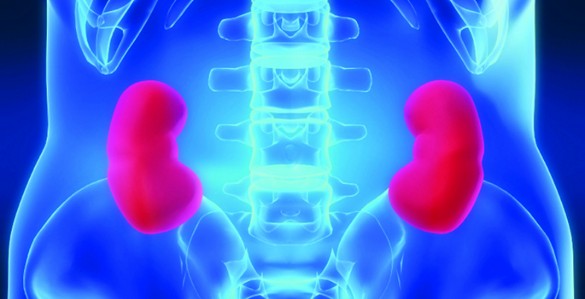
Vanderbilt University researchers have come closer to solving a mystery that has puzzled scientists for more than a century: after the loss of one kidney, what causes the growth of the remaining kidney to take up the slack?
Their findings, published Wednesday in the Journal of Clinical Investigation, could lead to the development of new ways to slow the progression of chronic kidney disease, which afflicts 20 million Americans and is a huge social and economic burden, said senior author Raymond Harris, M.D.
The kidneys not only filter the blood, but they play essential roles in regulating blood pressure, producing red blood cells and maintaining calcium and phosphorous levels.
Unlike the liver, which can regenerate by increasing the number of liver cells, loss of kidney function spurs hypertrophy, or compensatory growth in the size and function of individual filtering units, called nephrons.
Each kidney is made up of about a million nephrons, and each nephron consists of at least 16 different kinds of cells. Compensatory hypertrophy in the kidney, then, is a very controlled increase in nephron size and function, Harris said.
In progressive kidney disease, however, there is some evidence that compensatory hypertrophy may cause more harm than good, and may actually accelerate damage and loss of function, Harris said.
“By understanding these mechanisms … we might be able to develop some therapeutic options to slow the progression of kidney disease,” he said.
Harris is the Ann and Roscoe R. Robinson Professor of Nephrology and director of the Division of Nephrology in the Department of Medicine. First author Jian-Kang Chen, Ph.D., now on the faculty at Georgia Regents University in Augusta, was Harris’ long-time postdoctoral fellow.
Other co-authors included Eric Neilson, M.D., vice president for medical affairs at Northwestern University Feinberg School of Medicine and former chair of Medicine at Vanderbilt; and T. Alp Ikizler, M.D., the Catherine McLaughlin Hakim Professor of Vascular Biology at Vanderbilt.
The researchers previously demonstrated a role for mTOR (mammalian target of rapamycin) signaling, a critical regulator of cell growth and metabolism, in compensatory hypertrophy.
In the case of the kidney, the mTOR pathway is activated by enzymes called PI3 kinases. While this pathway is usually activated by growth factors and other cellular signals, the Vanderbilt researchers showed that activation in the kidney also can occur by the presence of amino acids.
“This is one of the first pieces of in vivo evidence for the importance of this pathway in regulating compensatory growth,” Harris said. It also suggests that modulating PI3K activation could be a way to prevent progressive nephron damage, he said.
The research was supported in part by National Institutes of Health grants DK083575, DK038226, DK051265 and DK046282.















